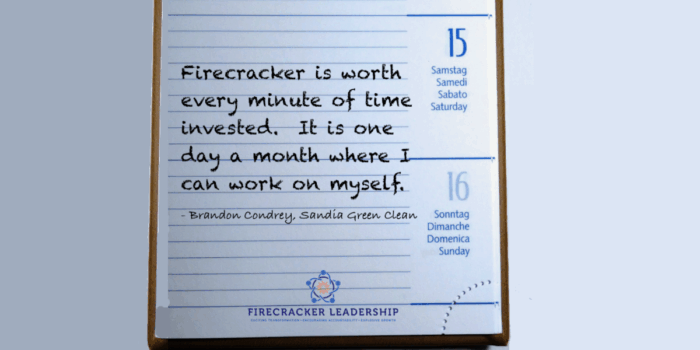Speak your gratitude I recently attended a funeral for a man who had touched so many lives. Story after story…
Lots are saying remote is awesome. I agree with this Atlantic article: I want to meet you in person when we can.
“If, as it is said to be not unlikely in the near future—the principle of sight is applied to the telephone as well as that of sound, earth will be in truth a paradise, and distance will lose its enchantment by being abolished altogether,” the British author Arthur Mee wrote in 1898.
So, fellow Zoomers, how do you like paradise? It turns out that in nirvana, the customary greeting is “I think you’re on mute” and your colleagues may or may not be wearing pants.
Zoom and related technologies were necessary during the COVID-19 shutdowns. At a time when more than 40 percent of the U.S. labor force was working full-time from home, videoconferencing arguably saved the economy from much worse collapse. Even as workplaces have opened back up, these technologies have allowed some workers to increase their productivity and given businesspeople options if they want to avoid the appalling state of commercial air travel.
But these technologies are not costless in quality of work, or in quality of life. Videochatting may promise the benefits of face-to-face meeting without germs and commuting. But it can provoke burnout for many, and even depression. When it comes to human interaction, it is like junk food: filling and convenient, but no substitute for a healthy diet.
By now, you have no doubt heard of “Zoom fatigue,” the range of maladies, including exhaustion and headaches, that are associated with hours and hours of virtual meetings. Survey data from October 2020—when 71 percent of people who could perform their job from home were doing so all or most of the time—revealed that among those using videoconferencing often, more than a third were worn out by it. Not surprisingly, Zoom fatigue rises with frequency and duration of meetings.
Before 2020, very few scholars were focused on the effects of virtual interaction, so research on what Zoom life is doing to us—and why—is in its infancy. One review of the emerging literature in the journal Electronic Markets found that Zoom fatigue has six root causes: asynchronicity of communication (you aren’t quite in rhythm with others, especially when connections are imperfect); lack of body language; lack of eye contact; increased self-awareness (you are looking at yourself a lot of the time); interaction with multiple faces (you are focusing on many people at once in a small field of view, which is confusing and unnatural); and multitasking opportunities (you check your email and the news while trying to pay attention to the meeting).
Scientists have found that videoconferencing affects many different kinds of brain activity. Among other things, it mutes mirror neurons (which help us understand and empathize with others) and confounds our Global Positioning System neurons (which code our location). In the latter case, virtual interaction creates confusion and burnout by placing the Zoomer simultaneously in one physical space and another—perhaps very distant—virtual space. Think of what happens to your phone battery when it is on Waze trying to figure out where you are. It might feel a lot like what happens to your mental energy when your brain is trying to figure out where you are—and it might help explain why an hour on Zoom can feel like four hours in person.
Although having virtual interactions may be better for well-being than having no social interactions, using video-calling to the point of fatigue has been shown to predict high rates of depression, anxiety, stress, and dissatisfaction with life. Virtual interaction is notably problematic for students, which helps explain the disastrous learning outcomes during the pandemic, especially for at-risk youth. This principle extends to college students: One 2021 study in the journal NeuroRegulation found that almost 94 percent of undergraduates had “moderate to considerable difficulty with online learning.”
At work, virtual interactions appear to cause two main problems (besides basic unpleasantness): lower performance and suppressed creativity. In a 2021 report in the Journal of Applied Psychology, researchers who monitored 103 virtual workers’ fatigue during meetings found that when workers used their camera (versus having it turned off), they were less engaged during meetings that day and the one after as well. Scholars writing in Nature in 2022 found that videoconferencing inhibits the production of creative ideas. Virtual work may also lead to more siloing in the workplace as worker networks become more static. I have heard these complaints constantly in my field of academia, which relies on creativity and sharing ideas. As one friend who started teaching at a new university at the beginning of the pandemic told me, “Even after a million faculty meetings on Zoom, I still couldn’t pick three of my colleagues out of a police lineup.”
The balance of evidence to date suggests that some people suffer a lot more from Zoom fatigue than others, but that for millions it likely deteriorates well-being, and for some—especially young people—this can be catastrophic for learning and mental health. For happiness and productivity, virtual interactions are better than nothing. But in-person interactions are better than virtual ones for life satisfaction, work engagement, and creativity.
Like most things, the right amount of virtual interaction is not zero. But for many of us, the amount we’re getting presently is too high. Each of us should think about virtual interaction more or less like nonnutritious food: In a pinch it’s okay, but we shouldn’t rely on it for regular social sustenance, because it will hurt our health.
Accordingly, employers, teachers, and friends should use the technologies as judiciously as possible, keeping virtual meetings, classes, and conversations short and to-the-point. And each of us should practice good Zoom hygiene by insisting on boundaries around our use of the technology. When possible, turn off your camera during meetings; use the old-fashioned phone with friends; agree with colleagues before meetings to an absolute, drop-dead end time, ideally after 30 minutes or less. Also, pay attention to the creeping effects of Zoom fatigue, such as burnout and depression, and make sure you have regular breaks from the technology, such as no-Zoom weekends and a complete moratorium during your summer vacation, if you take one. Finally, on your Zoomiest days, program in some time with at least one real live human.
What bothers me the most about video-based technologies is that they make the realest part of life—human interaction—feel fake. If you are a fan of futurism, you know that some would say that such a feeling could be close to the truth of our situation: Many scientists and philosophers have suggested that we all might be living in a simulation of some advanced civilization. As fantastic as it sounds, Scientific American reported in 2020 that the odds of this are probably about 50–50.
I don’t know how to assess this hypothesis, but I don’t want it to be true. I want my life to be “base reality”—my temporal body to be genuine flesh and my soul something that is authentic and eternal. I want happiness and love to be real. This is, I suppose, a philosophical objection to our sudden move into virtual space with one another: Virtual interaction is a simulation of real human life. The images on the screen are not other humans; they are digital icons representing humans in a way that makes me interact with them like fellow humans.
Just as I want to be real, I want you to be as well. I want you to be something more than a two-dimensional pixelated image, assembled from a series of ones and zeroes through cyberspace. So, if it’s all the same to you, let’s meet in person.



